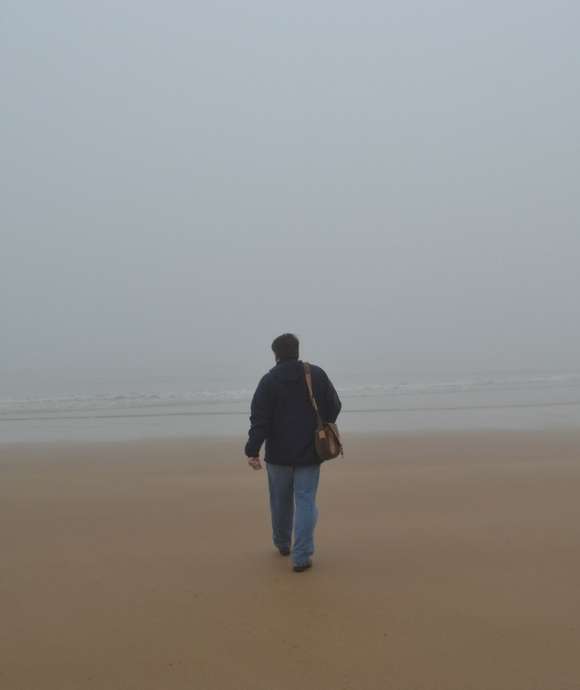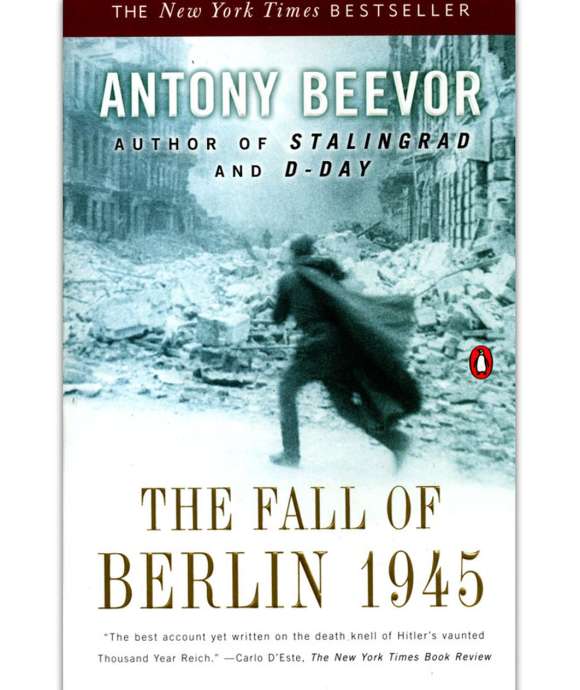On April 16, 1945 the final assault on Adolf Hitler and the Third Reich began as Soviet Red Army forces attacked towards Berlin from the east. What followed was two weeks of desperate but futile fighting by German defenders, many of them old men and young boys, as the city was engulfed by Soviet forces who relentlessly hunted for the Fuhrer hiding in his underground bunker lair. Once considered the most beautiful and technologically modern of all European capitals, Berlin was razed to rubble as women were targeted for gang rapes, businesses and stores were looted, and civilians carved up the corpses of dead horses killed in the streets for meat. Although he had professed that he would give his life for his people, Adolf Hitler did not do so. Instead, in denial of reality he moved imaginary armies around on maps to defend the city he dreamed would one day rule a massive German empire under the new name Germania. But reality could not be long denied. After relating his last will and political testament and marrying his longtime mistress Eva Braun, he committed suicide with her in the bunker under the Reich Chancellery. Their bodies were burned in the Chancellery garden. In a final lie after his death, German radio reported that Hitler had fallen in battle. When the city was taken seventy five years ago on May 2,1945, over 300,000 Berliners and 80,000 Red Army soldiers lay dead amongst the ruins. Approximately 11 million had been murdered in Nazi concentration camps and over 60 million would be killed throughout the world in the war against the Axis powers before peace was finally achieved, but the military campaigns in Europe were finally over.
Before the year was out on November 11, 1945 the Soviets unveiled a monument to their victory in the Tiergarten, the massive forested urban park in the heart of Berlin that was now burned out by incendiaries, pockmarked with artillery, and a final resting place for over 2,000 dead Red Army soldiers who had traveled the road to Berlin, only to fall there. The Soviets picked a spot which Hitler had planned to redesign as part of Germania’s triumphal architecture after the final Nazi victory. The ruins of the German Reichstag building were visible from the Soviet memorial, as seen in this photograph of a historic marker I took during a 2017 museum tour of Berlin.

The Soviet War Memorial at Tiergarten pictured with the ruins of the German Reichstag in the background, circa 1945.
Courtesy Keith Huxen, PhD
The stoa-shaped war memorial features gray and black marble from destroyed Nazi office buildings, including Hitler’s Chancellery building. On top of the stoa stands a brass statue of a Soviet Red Army soldier; his hand casts over a Cyrillic inscription commemorating the “eternal glory” of his comrades who fell in the war against the Nazi invaders to preserve the Soviet Union. Flanking the memorial on each side are a T-34 tank and a Red Army ML-20 152mm howitzer. When one visits today, so many decades later, perhaps the most impactful thing that greets the eye is how green the Tiergarten now is, and how the green of the tank and howitzer gun nearly get lost against the natural grown-in backdrop of the park. One is left to imagine how different it must have all looked back in 1945.

Soviet T-34 tank and ML 20 howitzer gun in the Tiergarten, Berlin
Courtesy Keith Huxen, PhD
If one walks through the portico under the Red Army soldier, behind him one finds a small open museum which tells the story of the construction of the monument. Cool whites and grays, with solid black lines, float over smooth rolling green lawns. Beyond stand square white columns and black iron gates: the entry to a cemetery where over 2,000 Red Army soldiers rest after falling, final and eternal witnesses to the last battle.

Soviet cemetery behind the Tiergarten Memorial in Berlin
Courtesy Keith Huxen, PhD
VE-Day commemorations and ceremonies take place at the Tiergarten memorial annually on May 8, the anniversary of the signing of surrender terms in Berlin in 1945 by Nazi Germany to the Soviet Union (Moscow officially designated their VE-Day as May 9, and celebrations in Red Square are held today on that day). The memorial is also a pilgrimage site for Red Army veterans and the families and relatives of Red Army soldiers. Even though the memorial was located in the British sector of Berlin, the US, UK and French all supported the construction of the memorial in honor of the Soviet sacrifice and victory, and throughout the Cold War Soviet honor guards were given access to stand honorary guard duty.
For me, the most memorable part of the memorial was not the marble part of the actual memorial itself, or any of the military artifacts or artistic adornments, but the splashes of color—yellows, pinks, oranges, reds, violets—from flowers and mementos left behind by people today for the fallen on the gray and black monument. The memorial is a living memory of the last battle against Hitler, and the terrible cost it took to end his regime forever.

Flowers left at the Tiergarten Soviet War Memorial in memory of the Battle of Berlin
Courtesy Keith Huxen, PhD

"No matter one’s age, travel is a unique and exciting educational experience. In my work, I have had the opportunity to reflect on history, events, and people in the places where they experienced life. Through the viewfinder, we can not only find history and perspective, but create memory, and evoke our evergreen past."
– Keith Huxen, PhD, Senior Director of Research and History, The National WWII Museum

The Fall of Berlin 1945
Support the continuing educational mission of The National WWII Museum by shopping our Museum Store book selection.
This article is part of an ongoing series commemorating the 75th anniversary of the end of World War II made possible by Bank of America.
Keith Huxen
Keith is the former Senior Director of Research and History in the Institute for the Study of War and Democracy at The National WWII Museum.
Cite this article:
MLA Citation:
APA Citation:
Chicago Style Citation:





![Max Fuchs, New York City cantor, sings as Rabbi Sydney [sic] Lefkowitz, Richmond, VA, conducts the first Jewish services from Germany.](/sites/default/files/styles/max_650x650/public/2025-10/image1.jpg)



